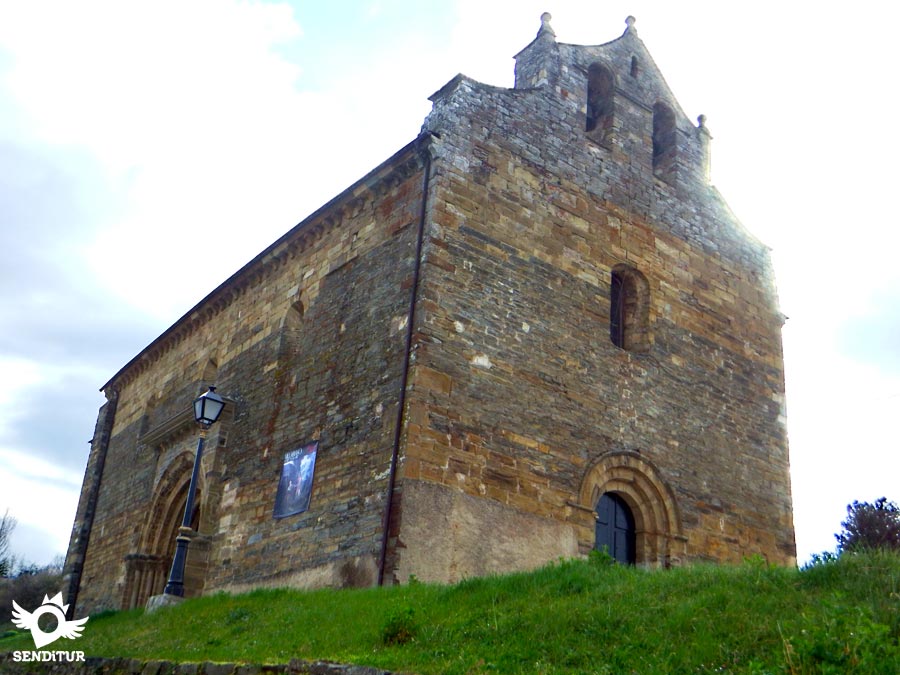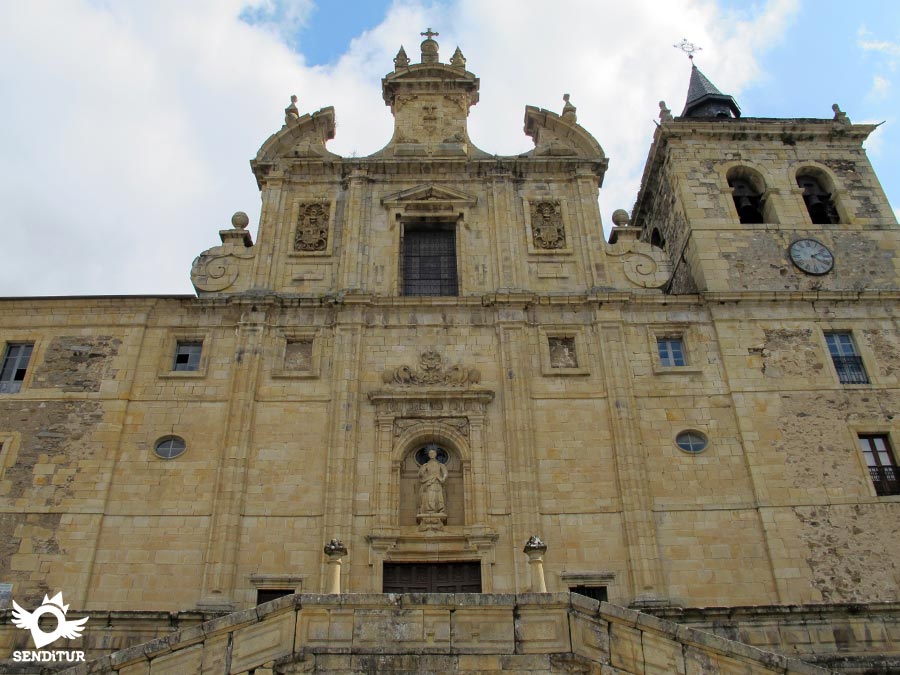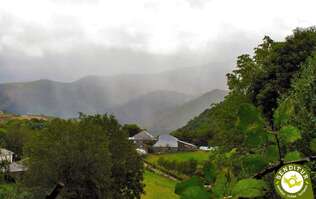It is situated in the heart of the Leonese mountains, where the rivers Valcarce and Burbia meet. Its municipal district occupies part of the Ancares Leoneses Biosphere Reserve. Remains of Bronze Age utensils and art found in the area suggest that the place already had a population settlement of some importance in Roman times, even earlier. Some attribute its foundation to the Roman Suplicio Galbe and say that it was known under the name of Berdigum Flavium, also the area would run pre-Roman roads. In the high Middle Ages it was known as Burbia and the oldest quotation refers to the battle that was fought here between Muslims and Christians back in the year 791. Villafranca del Bierzo began to acquire importance around the year 1070 when the monks of Cluny built the Monastery of Santa María del Cluniaco in order to help the pilgrims who were heading to Santiago de Compostela making the Way of Saint James, many of them, Frankish pilgrims who came to settle in the place and from which it took its name, "villa de francos".

In the 12th century King Alfonso IX granted it status and privileges, later, in the late Middle Ages it formed part of different lordships, lay and secular, and in the 14th century it passed into the hands of the Counts of Trástamara and Lemos. For this reason it can be said that Villafranca del Bierzo has been forged as a landmark on the Way, and for having been the place of residence of the nobles of the region. Villafranca perfectly combines the present with its medieval air loaded with an important past.
Walking through the irregular streets of Villafranca del Bierzo is entering a medieval era where at every step there are mansions, palaces, and coats of arms that speak of a great history, not without reason it is a Historic-Artistic Ensemble. Of its streets, the so-called the Water, is all a monument to admire, it brings together the palace of the Marquises of Villafranca and Torquemada, both of the eighteenth century, next to the palace of Torquemada is the Moorish house, the fifteenth century, in this street is also the birthplace of the poet Enrique Gil y Carrasco. A pleasant walk along the Alameda, which is a beautiful sample of romantic garden of the nineteenth century and whose center is located the fountain known by the Chata, which comes from the Monastery of Santa Maria de Carracedo, or rejoice with the secluded charm of the Main Square, with its arcades and old houses with glazed balconies, invite visitors to tour the rest of buildings of the small Compostela.

The 12th century church of San Juan, which was one of the four parishes in Villafranca, the La Concepción convent, the La Laura convent, the La Anunciada convent, built on the ruins of an old pilgrim hospital, that of Santiago, its foundation has the appearance of a legend and was in charge of D. Pedro Álvarez de Toledo y Osorio in 1606 for his daughter who wanted to profess as a nun. The Collegiate Church of Santa María was built in the 16th century where the primitive Monastery of Santa María de Cluniaco used to be. In the upper part of the town, is the castle, its building looks more like a castle-palace than a castle-fortress, is from the sixteenth century and has four towers, during the War of Independence was dismantled by English and French. Of the Monastery of San Francisco, whose construction was initiated in the 13th century, only the church that is dedicated to the same saint is preserved, in it you can admire some beautiful polychrome wood coffered ceilings. San Nicolás el Real, originally built as a Jesuit house and school, houses the image of the patron saint of Villafranca, the Holy Christ of Hope. And of course, in a town so impregnated with the Way the first thing that the pilgrim finds is the church of Santiago, Romanesque of century XII, the true and most famous jewel of the church, is the Door of the Forgiveness, where the pilgrims, when they are incapacitated to continue until Santiago de Compostela, gain the jubilee.

In the Holy Years of Compostela, this door as well as that of the Cathedral is opened, being, together with it, the only two in which you can win the Gracias Jubilares. And completing so much exuberance of art and history Villafranca does not forget to feed the body and offers a wide gastronomic culture in which the botillo, the empanada or the octopus are accompanied by a rich wine of the area and to finish that better than with a good sweet how about some cherries or cherries in aguardiente?
Villafranca del Bierzo begins the year celebrating San Tirso on January 28th, lawyer of rheumatic and bone diseases. Then the Carnivals, of great tradition in the whole of Bierzo, give way to a Holy Week in which monuments and streets take centre stage. A Festa do Maio takes place on May 1st. In July and August Villafranca enjoys fairs and the tourist festival. But it is in mid-September when the town is decorated to honour its patron saint, the Christ of Hope. We must not forget a festival of provincial importance that is celebrated in Villafranca every year on the last Sunday in spring, the Poetry Festival.

A traditional celebration in Villafranca is A Festa dos Maios. It is celebrated on the 1st of May and the evening of the previous day. It is a feast of pagan rituals where the flourishing spring is asked that the spirits of the plants be benevolent to the fertility of the people. Balconies are adorned and the boys go out to the field to cut the branches of the cañaveiras with which they then dress the May. The children make Mayos, one for each zone of the town. At noon they begin to walk the streets, singing to the women, who from the balconies give them money, chestnuts or walnuts. Depending on how generous the obolo is, the donor will be sung to, this house is made of glass where a general lives or this house is made of slabs where a rusty lives. In the course of the parade the Mayans lie down and rise to evoke the death of winter and the rebirth of spring. Finally all the Mayos are concentrated in the Main Square and later a popular meal is celebrated for all those interested.

There are two versions of the origin of the name of Villafranca del Bierzo, one says that here was formed a borough of Franks, French pilgrims, and that this was what gave the name "villa francorum" and importance to the population. The other speaks of a villa without franchises, thanks to royal prebends. It also had two corregidores, one for the Franks and the other for the local people.
Legend has it that the origins of Villafranca are related to the vaqueiros of Tineo and Luarca, who wishing to find fertile valleys and pastures decided to trust the search in the instinct of a good white cow. In order to do so, they let it wander without losing sight of it, and the animal reached the rich lands of Villafranca, so the cowboys moved their settlement here.
To Villafranca del Bierzo we arrive following the A-6 motorway or the old N-VI, the locality is also reached by different local roads that link it with the different nearby villages, such as Cacabelos or Corullón among others.
Villafranca del Bierzo has a daily bus service that connects it with Ponferrada, León and Lugo.
The closest train station to Villafranca del Bierzo is Ponferrada.
SENDITUR is not responsible for any variation in the information described, as well as for the misuse of its guides and recommends that everyone be responsible and prudent in carrying out the activity. Likewise, we invite you to document yourself with books and specialized guides to complement the information described. From the commitment of SENDITUR with Nature and the respect to the balance of the environment, SENDITUR urges you to travel in a responsible way, with low environmental impact and respecting at all times the Natural, Cultural and Social environment wherever you go. For any suggestion, SENDITUR invites you to send an email to
8:05 h.28 km.

Continue watching …